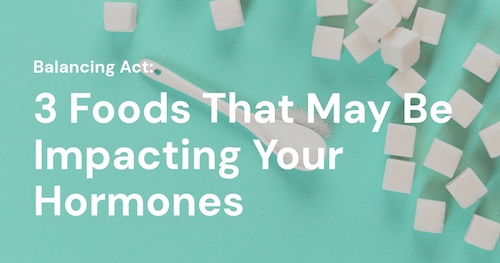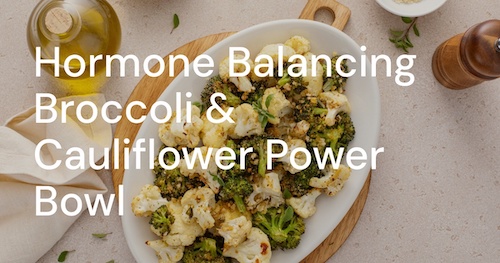

|
|||||||||||||||||||||||||||||




|
Be thankful for what you have; you'll end up having more. If you concentrate on what you don't have, you will never, ever have enough.
As we enter the week of Thanksgiving I just want to take a moment and thank you for being a loyal subscriber to my e-newsletter and sharing it with your family and friends.
I also want to ask you to take a moment and express gratitude to your body and the food we have that nourishes and fuels it. With our busy lifestyle it can be easy to take for granted the wonderful gifts we have right within us. Take time to thank yourself and reflect on all your body can do for you, it then becomes a little easier to implement healthier lifestyle habits.
I hope you enjoy my special Thanksgiving Newsletter. Know that creating a healthy lifestyle happens one day at a time and the little choices you make do add up. When it comes to your Thanksgiving Feast remember to be mindful with the choices you make.
Enjoy the day with your loved ones!

The best and most beautiful things in the world cannot be seen or even touched. They must be felt with the heart. - Helen Keller
Tis the season when life can get busy and at times the "to do" list can be long. But remember to take time, slow down, and INDULGE in the many gifts of life.

Here are just a few things that I see worth "indulging" in this season...I like to call these:
"The Gifts of Life"
What you get by achieving your goals is not as important as what you become by achieving your goals. Zig Ziglar
I wish you the best as you embark on the journey of a New Year and think of the fantastic possibilities the future holds. Today I am sharing five simple steps to implement to achieve any goal you set your mind to. One of my goals for the New Year is to help you achieve your maximum potential and feel amazing doing so. Contact me today to schedule an appointment!

5 Steps to Achieve Your Goals
1. Set your intentions. Be specific, write them down, and share them with others. Post in places where you can remind yourself daily what you are working towards. Write out WHY you want to reach your goals. What motivates you? Consider making a vision board or vision book to help keep you focused.
2. Know that any goal worth achieving takes work. There is no magic pill or potion to lose weight... if there were, Oprah would have found it :). Dreaming about crossing the finish line will not get you there unless you put in the work daily. Talking about how bad you feel, tired you are, or unhappy with your body and current state of health will not change anything. However, taking daily action steps, eating more whole foods, decreasing portion sizes, drinking more water, and reducing the sugar and alcohol in your diet will improve your health and energy. Take small steps daily. Acknowledge that change will take work and time. Be patient with yourself and find a way to track, acknowledge, and reward your progress.
3. Be grateful for what you have and what you can do. On your journey to better health and well-being, take time every day to state at least one thing you are grateful for. It can be something you have, something your body has done for you, or someone who is in your life. It is all too easy to fall into the trap of always wanting more, and while wanting to better yourself can be a good thing, it is also essential to appreciate and love what you have. Find gratitude in the little things every day.
4. Help others reach their goals. This may seem different than any other advice you have heard regarding your New Year resolutions, but there is so much power in this action step. First, implement steps 1 - 3. After your intentions have been set, you are willing to do the work, and you express daily gratitude - it is time to step outside of yourself and see who else you can help. We are all looking for something out of life, and believe it or not; it is not the same thing! We may want similar things, but we each have unique goals and motivations behind our dreams. If you take the time out to help someone else reach their goals, it is almost guaranteed that someone else will help you reach your goals somewhere along the way. Part of paying it forward is making the world a better place, stepping outside of yourself and your problems, and helping someone else in need.
5. Believe in yourself and surround yourself with people who believe in you and want to see you succeed. Step away from the "naysayers" - the people who boohoo your dreams and sabotage your weight loss efforts. If these people are close to you (for example, a spouse or parent), then have an honest talk. This may be where you need to go back to #4 - see where you can help them reach their goal. Become your own biggest fan. Write down the good in you; write out what makes you unique and special. Know that you deserve to reach your goals and feel your best. Believe you can do whatever you put your mind to.
“To have success, you can’t let failure stop you. To have great success, you can’t let success stop you.” - Robert Brault
*|FNAME|*,
Today is your final "re-assessment day!" Yesterday we assessed your mental and emotional outlook towards food and your health, today we will be re-assessing body changes. Before looking at the scale, the first thing I want you to re-assess is how your clothes are fitting and how you feel in your clothes?
Do you have the dress or pants you tried on at the beginning of the program? How do they fit today?
Are you stronger in your physical capabilities? Remember to record your progress!
Body Assessment:
Weight:
Pants Size: (be specific and identify a certain pair of pants you want to fit in)
Dress Size: (be specific, but realistic!)
Measurements:
• Chest
• Waist
• Hips
• Right Arm
• Left Arm
• Right Thigh
• Left Thigh
• Right Calf
• Left Calf
Fitness Assessment:
• Pushups
• Sit-Ups
• Walk or Run 1 mile in __________ minutes
• Stretch Test - Can you touch your toes?
Be proud of yourself! Thank you for joining in on this journey!
Be thankful for what you have; you'll end up having more. If you concentrate on what you don't have, you will never, ever have enough.
As we enter the week of Thanksgiving I just want to take a moment and thank you for being a loyal subscriber to my e-newsletter and sharing it with your family and friends.
I also want to ask you to take a moment and express gratitude to your body and the food we have that nourishes and fuels it. With our busy lifestyle it can be easy to take for granted the wonderful gifts we have right within us. Take time to thank yourself and reflect on all your body can do for you, it then becomes a little easier to implement healthier lifestyle habits.
I hope you enjoy my special Thanksgiving Newsletter. Know that creating a healthy lifestyle happens one day at a time and the little choices you make do add up. When it comes to your Thanksgiving Feast remember to be mindful with the choices you make.
Enjoy the day with your loved ones!

The best and most beautiful things in the world cannot be seen or even touched. They must be felt with the heart. - Helen Keller
Tis the season when life can get busy and at times the "to do" list can be long. But remember to take time, slow down, and INDULGE in the many gifts of life.

Here are just a few things that I see worth "indulging" in this season...I like to call these:
"The Gifts of Life"
What you get by achieving your goals is not as important as what you become by achieving your goals. Zig Ziglar
I wish you the best as you embark on the journey of a New Year and think of the fantastic possibilities the future holds. Today I am sharing five simple steps to implement to achieve any goal you set your mind to. One of my goals for the New Year is to help you achieve your maximum potential and feel amazing doing so. Contact me today to schedule an appointment!

5 Steps to Achieve Your Goals
1. Set your intentions. Be specific, write them down, and share them with others. Post in places where you can remind yourself daily what you are working towards. Write out WHY you want to reach your goals. What motivates you? Consider making a vision board or vision book to help keep you focused.
2. Know that any goal worth achieving takes work. There is no magic pill or potion to lose weight... if there were, Oprah would have found it :). Dreaming about crossing the finish line will not get you there unless you put in the work daily. Talking about how bad you feel, tired you are, or unhappy with your body and current state of health will not change anything. However, taking daily action steps, eating more whole foods, decreasing portion sizes, drinking more water, and reducing the sugar and alcohol in your diet will improve your health and energy. Take small steps daily. Acknowledge that change will take work and time. Be patient with yourself and find a way to track, acknowledge, and reward your progress.
3. Be grateful for what you have and what you can do. On your journey to better health and well-being, take time every day to state at least one thing you are grateful for. It can be something you have, something your body has done for you, or someone who is in your life. It is all too easy to fall into the trap of always wanting more, and while wanting to better yourself can be a good thing, it is also essential to appreciate and love what you have. Find gratitude in the little things every day.
4. Help others reach their goals. This may seem different than any other advice you have heard regarding your New Year resolutions, but there is so much power in this action step. First, implement steps 1 - 3. After your intentions have been set, you are willing to do the work, and you express daily gratitude - it is time to step outside of yourself and see who else you can help. We are all looking for something out of life, and believe it or not; it is not the same thing! We may want similar things, but we each have unique goals and motivations behind our dreams. If you take the time out to help someone else reach their goals, it is almost guaranteed that someone else will help you reach your goals somewhere along the way. Part of paying it forward is making the world a better place, stepping outside of yourself and your problems, and helping someone else in need.
5. Believe in yourself and surround yourself with people who believe in you and want to see you succeed. Step away from the "naysayers" - the people who boohoo your dreams and sabotage your weight loss efforts. If these people are close to you (for example, a spouse or parent), then have an honest talk. This may be where you need to go back to #4 - see where you can help them reach their goal. Become your own biggest fan. Write down the good in you; write out what makes you unique and special. Know that you deserve to reach your goals and feel your best. Believe you can do whatever you put your mind to.